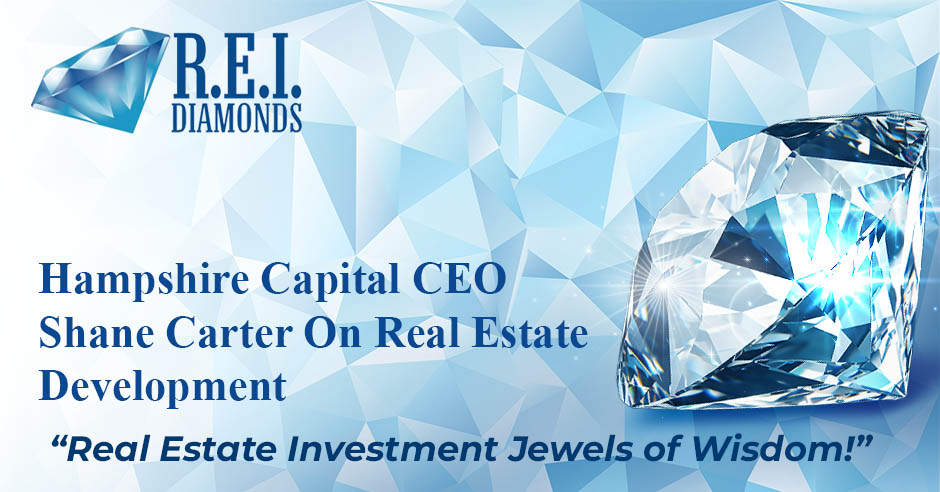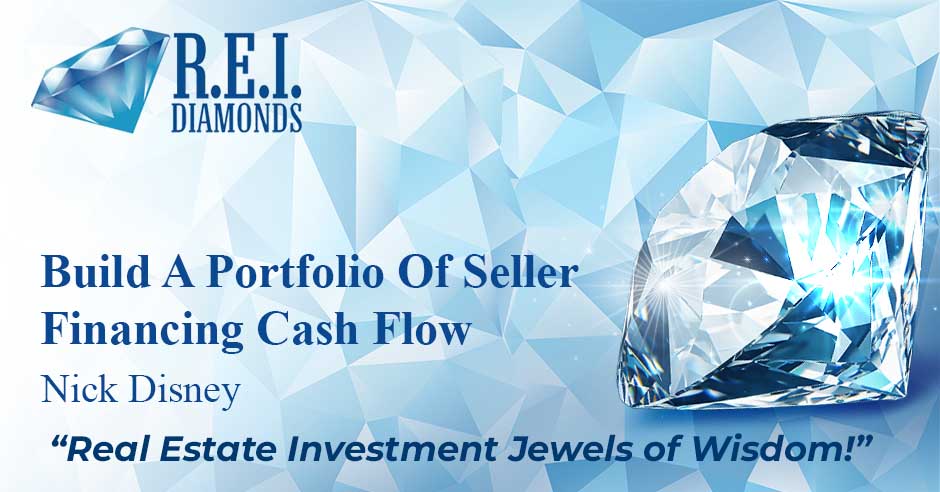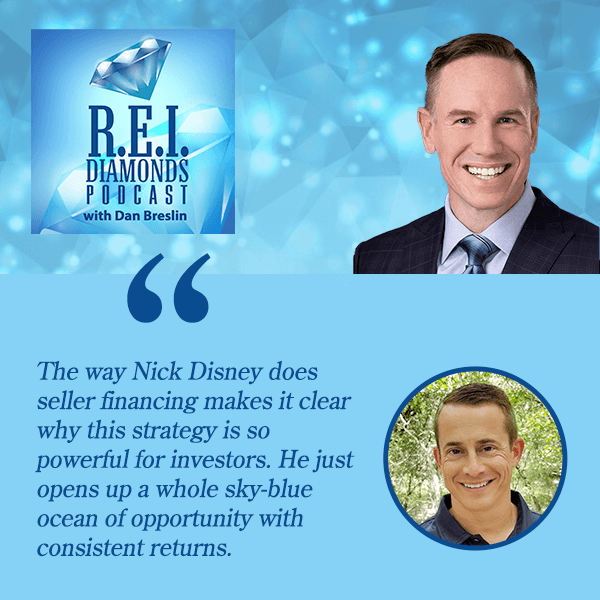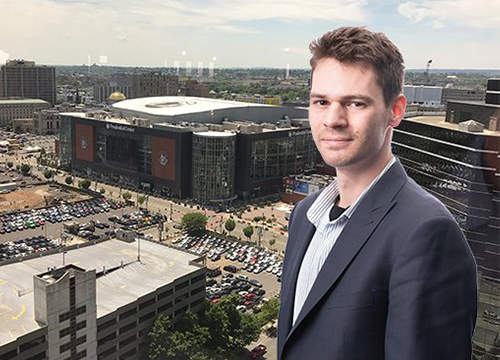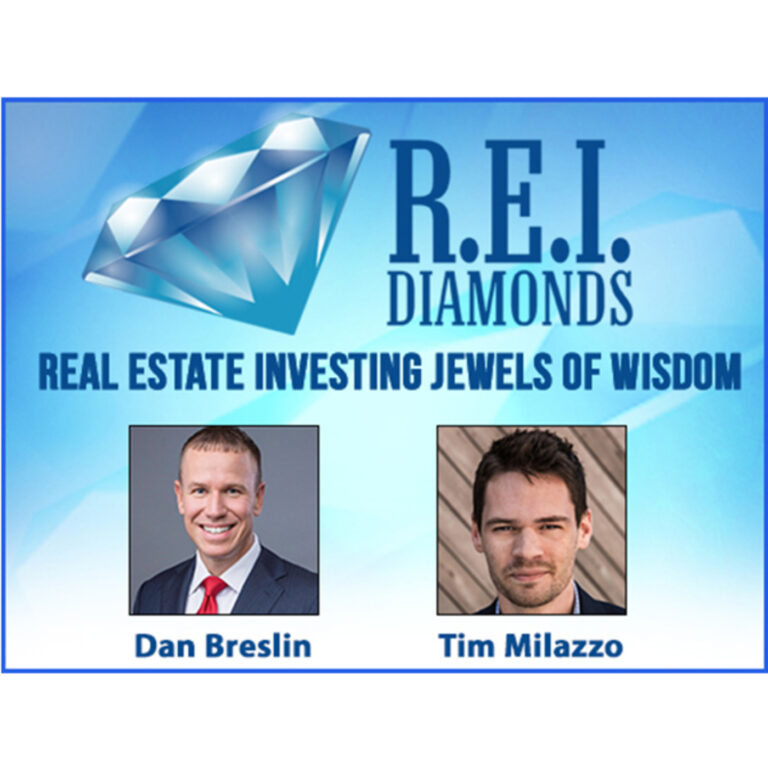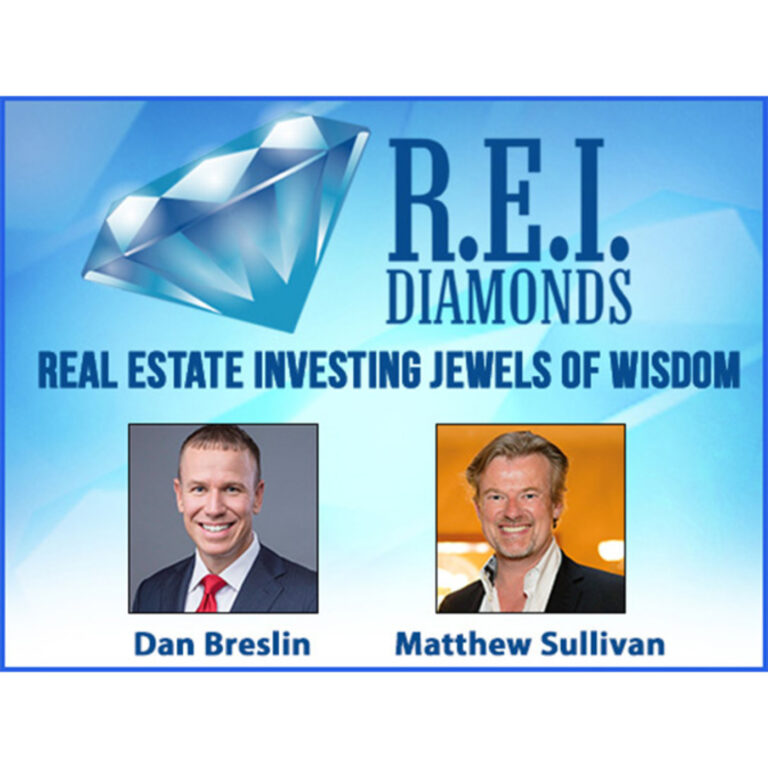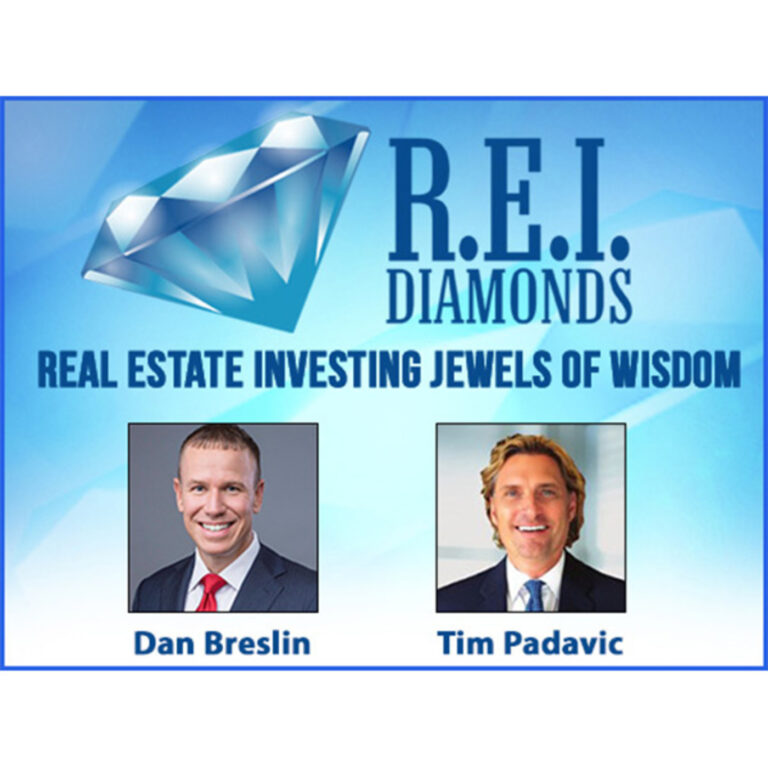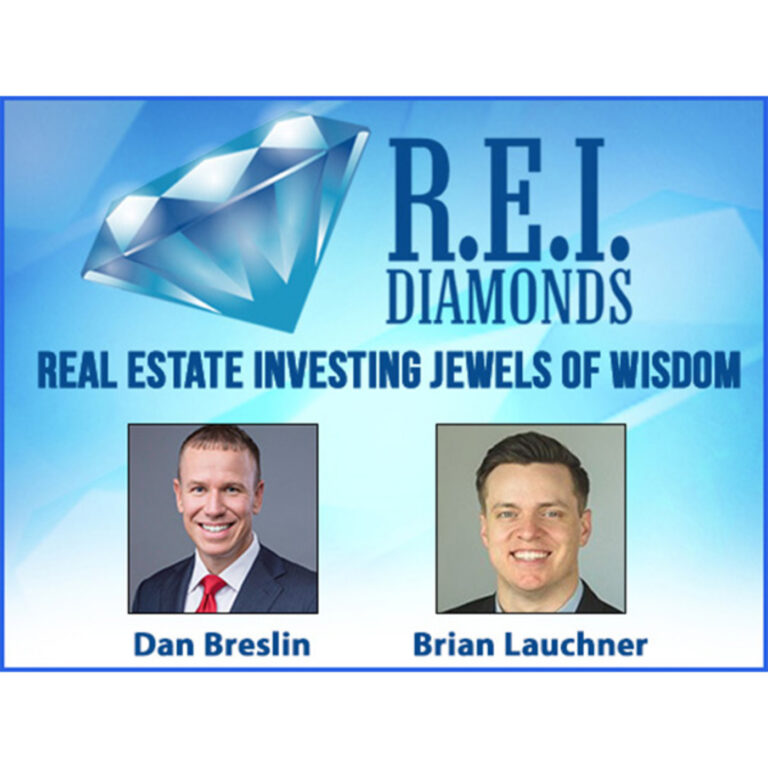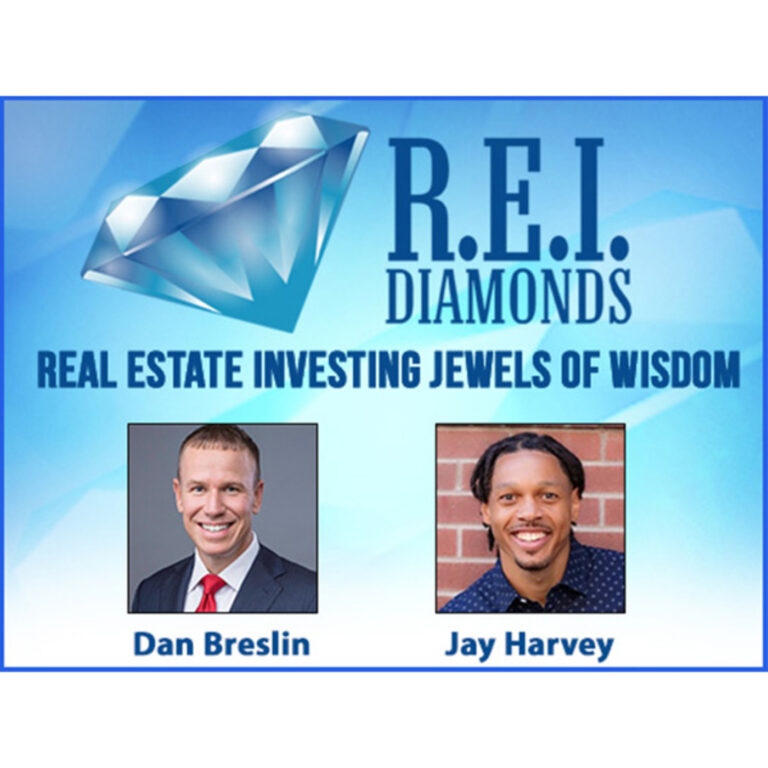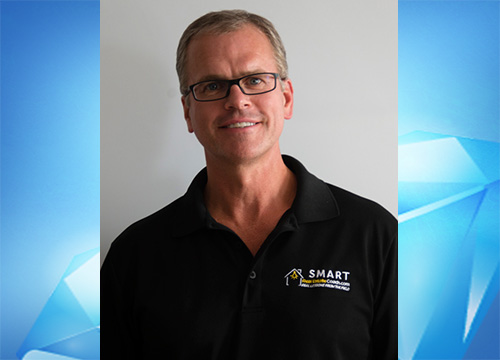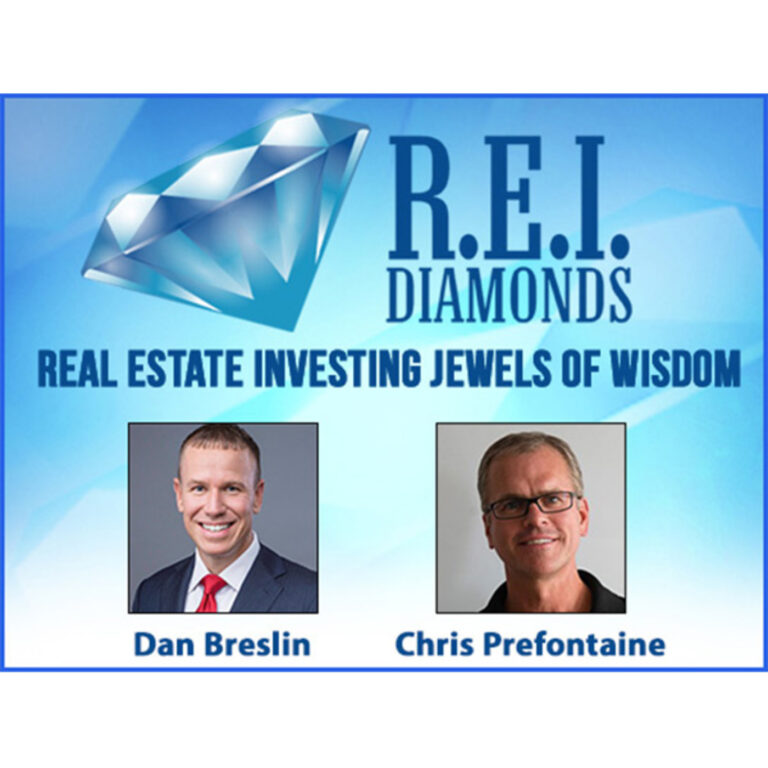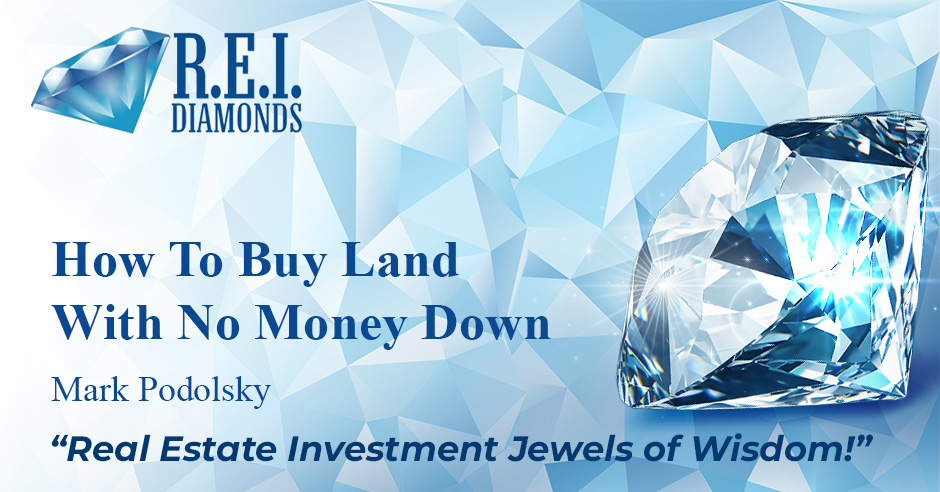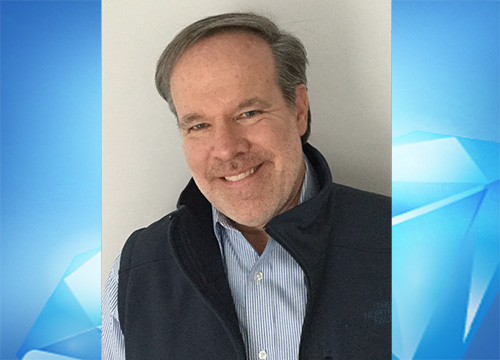Guest: Shane Carter is a seasoned real estate developer and entrepreneur with over 27 years of experience, specializing in multifamily and single-family development. He is the author of “Optimize Your Life,” which emphasizes balancing professional success with personal well-being. As the founder of Hampshire Capital, Shane leverages his expertise in construction and development to create value and foster community growth.
Big Idea: Shane shares his journey from home builder to successful real estate developer.
This episode is also sponsored by Lending Home. Lending Home offers reliable & low-cost fix & flip loans with interest rates as low as 9.25%. Buy & hold loans offered even lower. Get a FREE iPad when you close your first deal by registering here now.
Resources mentioned in this episode:
Shane Carter & I Discuss Real Estate Development:
- Balancing Personal Growth and Professional Success (00:01:46)
- Real Estate Development (00:07:45)
- Strategic Insights on Market Conditions (00:30:00)
- The Impact of Kindness and Networking (00:49:09)
Relevant Episodes: (200+ Content-Packed Interviews in Total)
- Real Estate Development with Karl Krauskopf
- Navigating Real Estate Development: Insights from Brandon Cobb
- Multifamily Strategies for Success with Ava, CEO of CPI Capital
- Storage Yard Real Estate Development with Chris Long
- Life Lessons on Prosperity with The Wealthy Gardener author John Soforic
- Family Values & Real Estate Investing with Jim Sheils, A #1 Wall Street Journal Best Seller
—
Watch the episode here
Listen to the podcast here
Hampshire Capital CEO Shane Carter On Real Estate Development
Mr. Shane Carter, welcome to The REI Diamond Show. How are you?
I’m doing great, Dan. Thanks so much for having me. It’s an honor to be here.
Balancing Personal Growth And Professional Success
I’m sure people who will have read the description and the bullet points from our conversation are looking forward to hearing about all of the large-scale single-family development deals and the multifamily assets. Before we dive into that, in September 2024, I believe, you released the book you wrote, Optimize Your Life. I know that a lot of our audience is about family, freedom, and living life to the fullest. Would you mind taking us through a little bit of the journey of putting that book together and maybe what the top-line message is?
Thanks, Dan. I appreciate that. This is a book that, just so we’re clear about it upfront, I didn’t write to be a lead magnet or to be a funnel into a course or to be anything other than a cathartic process of getting my thoughts out and wanting to share with others all that I’ve learned in the 27 years of my professional career and my personal growth journey. I’ve been a personal growth junkie from the very beginning. I’ve read and absorbed about every book you can. This is my recounting of the main lessons that I’ve learned on that journey. It starts with mindset and how we quite literally create the world around us via our mindset on a daily basis.
If you do that consistently and long enough, you craft your own life in a very meaningful way. The rest of the book also goes into what I believe to be a critical balance between mind, body, and spirit. I think that’s a piece that a lot of entrepreneurs miss. There’s a lot of influencers out there. I’m not going to name names, their sole focus is business growth. “Grow your business. Eat, sleep, live, and die, and breathe it. Grow for the sake of growth.”
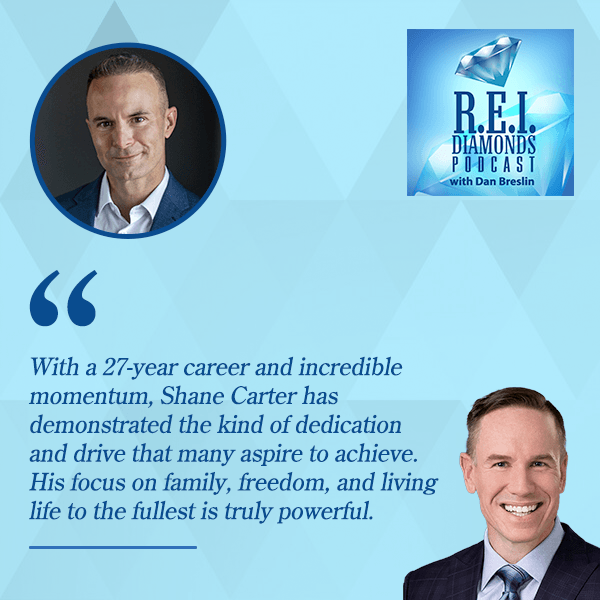
I offer many counterpoints to that that I don’t think are very healthy for most of us to try to engage in. The main one is relationships. It doesn’t matter how much money you have if you don’t have good relationships with your significant other, with your friends and family, with your children, etc. I personally know several people who are extremely wealthy and have massive regrets because they don’t have the relationship with their children that they wanted or they wish that they had had because they were so focused on growing their company.
That’s something for everyone to hear before it’s too late before they go too deep down that road. Also, physical health and wellness. I’m a big health and wellness guy. I don’t think that anyone performs to their highest and best self without a real clean machine and a highly functioning physical body. The spirit part is, again, something that people don’t talk a lot about, but I believe that a connection to a higher spirit and understanding yourself through that lens as a conduit to the beauty of a higher power is very releasing and freeing so that we can let go of the rope a bit and enjoy the journey more.
We create the world around us via our mindset daily. If you do that consistently and long enough, you craft your own life in a very meaningful way.
I imagine you must have a couple of kids then.
I have three.
About how old now?
My oldest boy is fifteen. He’ll be sixteen next month. I’ve got a six-year-old and a four-year-old.
You’re in the thick of it then right there.
Yes. I’m loving it.
I’m going to take the opposite side. I think there’s probably a time, maybe we go back. Your 27-year career and your boy’s about to be sixteen now. What about the first ten years? Was there a little bit of an obsessive drive that probably is helpful to get the momentum going? If someone is tuning in now and they haven’t quite got the momentum going in their career yet, I would posit it could be potentially a little bit detrimental and you may not get to where you want without some period of time. Is it 3, 2, 5, or 7 years? Maybe it’s different for a lot of different people. For me, I know I had to push hard for 5, 6, 7, 8, or 9 years before the momentum started to show. Not that I neglected my physical, spiritual, or relationships completely, but there is some place for getting the cart moving.
I can’t disagree with you. I think you’re right. If I reflect back on my journey, there was absolutely that time period. For me, it was similar to yours, probably. It was in that 5 to 7-year time period where it takes a lot of energy to get that flywheel to spin so that it starts to spin on its own. You’re right. It does take a drive and a passion. As a younger man in my 30s, let’s say, that was critical to my ultimate success.
I think you’re right on that. I’m not going to discount that at all. I’m fortunate that I had kids a little bit later so that I was able to establish my flywheel and have the grace to be able to step back and get a little more balanced about it. You’re right. It does take that hyper-focus up front to get something up and running and going.
It takes an incredible amount of energy to get the flywheel to spin, but once it does, it starts to spin on its own. The challenge is knowing when to step back and regain balance.
Maybe you and I are probably at that place where balance is important. I’m 44 now. My daughter graduated college here, so she’s 23. Got married, and may have another round of young kids running around here. This is a topic that’s hot on my mind. It’s like, what’s that going to look like in the next 5 to 10 years? If I fast forward and I’m blessed enough to have a 4 to 6-year-old there, what will I construct life from there? Falls back to the mindset piece of your mindset creates the world around you.
Real Estate Development And Career Beginnings
I realized that. The options are somewhat endless. How do I want to create the next steps of my life? Good position to be in. Let’s shift gears here if we can. Real estate development background. When I saw the booking agents connect us, God, it must’ve been 5 or 6 months ago at least. I was looking forward to this one on the calendar. It’s like, “This guy has this real estate development background.” Would you mind starting here in your career and establishing that may have been some foundation for what you put together since then?
My background, Dan, is what I like to call the classic self-made man story. I’m a bit older than you, so I bought this late-night infomercial Carleton Sheets’ No Down Payment book way back in the day, in the late ’90s. That was my kickoff to understanding real estate and investing in creative thought processes around real estate. I started wholesaling contracts and flipping houses. Through that process, I developed a passion for construction and development, the process of transmuting old, horrible properties into beautiful homes for families and folks to live in. It was extremely rewarding work, and I loved it.
I loved the whole knowledge base of understanding how a building works and how you build something from the ground up. I started to get into new construction as well and started a general contracting firm, did tons of renovations, tore a bunch of homes down, and built beautiful homes in their place. I grew myself in that capacity over the years, went from building starter homes to middle-market homes, to multimillion-dollar luxury homes.
I got into community development, where we’re getting land entitled and then putting in the roads and then building the homes and building entire communities. I also got into building townhomes and mixed-use projects, etc. That’s how I grew as a developer over the years, but that’s all transactional income. I always took the transactional income that I made in those businesses and invested in income-producing assets, predominantly multifamily, and predominantly value-add multifamily because I was a construction guy.
I didn’t know how to use other people’s money until 2014 or 2015. I think I took in my first investment. The beginning part of my career was, “I’ve got an extra $10,000 or $20,000,” and I would use it as a down payment, go buy a little fixer-upper 3 or 4-unit building, have my construction company fix it up, we’d rent it out, we’d refinance it, and I’d get my money back.
I’d buy an 8-unit, a 20-unit, and then a 60-unit, and so on and so forth. I let my equity and transactional money fuel my income-producing asset acquisitions. I learned how to partner with people and bring in partners to leverage their money and my expertise in construction and development. We started to do bigger projects, which got us into investing in the South, and starting to look hard at that in 2018 and 2019. We’ve acquired a little over 2,000 units and $320 million or so in assets there in the last five years.
What’s the plan? Are you holding those, or is it the buy, add the value, and sell strategy to cash everybody back out?
Those are still mostly value-add projects and properties. The value-add’s been completed on all of them. We’re in the buy-and-hold stage because of the market shift. We’re fortunate that we are in fixed-rate debt and have good leverage positions on all of them. We’re looking to exit assets in 2026, 2027, and 2028. We’re always looking to buy more. It’s been very difficult with the lack of liquidity and the lack of deals trading to find opportunities that make sense for us.
Exciting Real Estate Deals In Recent Years
It’s hard to make them pencil out. What’s the debt now? I haven’t checked, but I imagine you could probably get some Fannie products, like 6, 6.25, maybe 6.50, or something like that. That’s 30 years, you’re stuck in the thing, yield maintenance in the whole deal. What, in the last 12 to 18 months, are the deals that are exciting to you and that you are participating in and getting up off the bench for 2023, 2024, and now we’re in 2025?
We saw the writing on the wall there in late 2022, beginning of 2023, in terms of the rising interest rate environment and what that was going to do to the industry. We were fortunate to pivot back into my background, skill set, network, and experience and got back into land development and got back into that side of the business and are doing it in the growth markets that we already know and understand.
We have folks in Dallas and folks in Tampa, where we have staff and employees in those areas. We’re hyper-focused now on doing what’s called horizontal land development. We do entitlement work, but we also take land that’s already been entitled and approved, and we buy it and put it in the roads and infrastructure. We get construction loans, put in the roads and infrastructure, and then sell finished pad sites or finished lots to the national homebuilders.
Some of our clients are D.R. Horton, Pulte, Meritage, those types of firms, top 50 nationally traded homebuilders. We’re excited about that side of the business and growing that side of our business because there’s a dearth of developers who know how to do that and have the capacity. We’re fortunate, we have a $50 million investment fund that we started last year, that we raised capital for.
That fund allows us to invest in land development. To a builder, we’re an interesting group because we have capital, we have the resources, we have the skill set, we’re vertically integrated, we do the construction management, and we’re able to come in and fill a void or a niche in the ecosystem where there are not enough guys developing lots for the homebuilders. We’re capitalizing on that opportunity now.
It’s interesting, and I’m in a partnership where we’re doing quite a bit of this. I think our fund has 14 or 18 projects, something like that. Each one is probably between around maybe 80 lots on the low end and 250 to 300 on the high end, except ours is all paperwork. It’s sold to the builder as soon as the construction drawings are approved, they’re going to settlement. Not a tree has been moved, and not a curb or a water line has been installed on the property.
You’re now stepping in, and maybe you’re an interim type of person who’s taking that dirt and putting the road work in there. It can be a risky scenario, at least, that’s the way our investment philosophy has worked, which is why we’re exiting on the front end. I think D.R. and Pulte and the rest of them have another third-party developer who comes in, does all the roads, and does it almost work for a fee. Is that you guys, or are you buying the land?
That’s us. After this episode, we have to talk because I’m your buyer for all those deals. That’s exactly what we do. It is because D.R. Horton, a lot of these nationally traded companies, publicly traded companies, I should say, have what’s called a land light strategy. What that means is they keep it off their books, and they keep it off of their balance sheet by leveraging third-party developers. For D.R. Horton, they’ve got an interest in a group called Fourstar Group, another publicly traded company.
All they do is put in roads and infrastructure, and sell the finished lots to D.R. There’s an entire network of other builders, and Fourstar Group doesn’t serve all of D.R.’s needs. There’s still a tremendous amount of opportunity and need for third-party guys like us to come in, and put it on our balance sheet. We take the construction loan, we take the risk, we put in the roads and infrastructure, and then we deliver the lots on a 2-to-3-year timeline.
They get to buy the dirt with finished lots and tranches, take them down, build houses, sell them, and they don’t even have to buy the next tranche until they’ve sold through most of those first ones. It hits their balance sheet, and then it turns into revenue quickly. That’s their strategy. We’re an important part of that ecosystem because we hold it on our balance sheet, and we take that risk, and we take that interest carry, and we hold it on our side.
We make the numbers work well. You brought up something important though, which is risks. The risk on our side of the business is usually, who’s going to buy this? We mitigate that risk by having the contract with the builder upfront before we close on the construction loan. Let’s take one of your examples. You’ve got 120 lots. You got it entitled and approved. You got construction drawings done, and you’re saying, “I’m selling it to the builder,” but the builder is not buying it.
The builder is taking that, and they’re assigning it to someone like me for us to close on and put in the roads and infrastructure. What they’re doing is they’re giving us a forward contract to buy the finished lots at a certain price. There’s even an annual escalator involved in it, etc. They’re locking in their position in their land pipeline and controlling it without having it on their balance sheet. That’s our role.
If a builder is paying $100,000 for a finished lot with all the infrastructure in there, what can your all-in cost basis be with the interest to carry the whole thing? Are you able to pack a 30% profit margin in there, or is it a little thinner than that?
It depends on the deal. That’s a great question. It’s usually in that 20% to 30% range. Our buy box is pretty similar to yours. What we focus on is the 100 to 400 lot community size. We want to be in that $15,000 to $20,000 a lot profit range. That’s what we target and focus from a risk-reward profile. It is because again, these construction loans, I’m personally guaranteeing them. We go out, we get a $20 million construction loan to build all the roads and infrastructure. It’s not on the builder’s books, it’s on our books.
Even if it’s non-recourse to the entity, there are these things called completion guarantees. Anyone who’s done development knows the completion guarantee for a development project is in place the entire time until it’s completed. You are on the hook then, therefore, personally, the entire time due to that completion guarantee clause.
When you guys build them out, if you have a 300-lot subdivision, somebody got that entitlement done. Are you doing the construction drawings and approvals, or is that done also and handed to you when you step in?
We do it both ways. We work with all kinds of different folks. Some folks get the land use zoning approvals completed and the entitlements. We step in and do the engineering drawings and the CDs, and get everything laid out, and then we close on it. We love working with folks who have all the CDs done, the engineering’s done. They’ve already got indications of interest from the builder groups, and we step in, and we close on it, and we go to town, and get those contracts with the builders set up.
Everybody wins there. We’re not taking away from anyone. We’re still giving someone like yourself, or somebody who’s doing the entitlement work, all the money that they want. We’re still selling the lots to the builders at a price that makes sense for them to build their product. We’re sandwiching ourselves in the middle and making a nice profit for taking on the risk we’re taking on.
Do you guys build that out in one tranche, or would you build out 80 lots in four separate tranches as they complete, and perhaps not have to pay interest on the other unfinished sections until it’s time?
That’s a good question, Dan. This gets into my business partner and the highly detailed financial models that we have relative to this, but we try to have our expense build be in concert with our revenue chunks that come in the lots. There is an efficiency though, however, from a site work. I own site work equipment, I’ve been doing site work development for a long time.
There is an efficiency of mobilization and getting there and doing the work that starts to become cost-prohibitive if you’re asking guys to stop and wait, and then remobilize. There’s this fine line of allowing the project to proceed and the expense to build, and then staggering the lot takedown schedule and the revenue build, so that your max exposure and your max interest carry is usually never more than about 40% to 50% of the total cost of the project.
First Subdivision And Land Development Experience
It sounds complicated, complex, and scary. Can you take me back to the first subdivision that you approved? Maybe it was like you turned one lot into two, or something like that. What was the first time you went and did a subdivision where you put infrastructure on the land?
The first time I did that, that was a small four-lot subdivision. It was here locally when I was still an active home builder. Again, someone else had done all the work to get it entitled and approved. It was shovel-ready. Drawings were done for the roads. The lots were laid out. It was a plug-and-play go. Bought it, put in the roads and infrastructure, built the homes, and sold them.
I make it sound easy, but that took us the better part of a year to do that because it was our first one and we didn’t know exactly what we were doing. We screwed up the water lines at first, and we worked with the city to get that corrected. We had to dig up some water lines and put in some curb stops in the right locations instead of the wrong locations. That was a bit nebulous on the plan. That’s why we made that mistake. The water management was fine.
The sewer was fine. The grades, we had to play with some of the grades a little bit. The engineers had laid out grading for the individual lots in a way that wasn’t as ideal when we got there physically on site and started building and developing these homes and having to deal with all the additional fill that they didn’t calculate for. We raised some elevations on some of the homes to account for some of that additional fill and did some tweaks like that. It was a great learning experience on only four lots. This is going back probably fifteen years ago now, but a great learning experience.
Surviving Economic Downturns In Real Estate
You were in the business through the last downturn. I guess it’s the second downturn if we’re counting the COVID downturn. It’s been a while now. In 2007, 2008, or 2009, around that time, what were you up to then, Shane?
I was in the thick of it. I was buying assets. I had, not a ton under my belt at that point, but I want to say I probably had 40 or 50 rentals under my belt at that moment in time. I was doing construction and development work. I was flipping houses, I was renovating homes, and I was doing new construction builds for others as a fee build for clients and building custom homes. I hadn’t quite got to being an entitlement developer yet. I was in the thick of it.
Being a custom home builder through that time is what allowed me to thrive and exist through it without getting through completely unscathed. A couple of things. First of all, everything that I owned, I didn’t over leverage because I bought it cheap. It was all challenged properties that needed to have a ton of work done. I did the construction work ourselves at cost and refinanced them at a low enough level so that they would produce great cashflow for me.
In other words, I didn’t pull out too, too much equity. I didn’t over-leverage those. That was a great lesson to learn through the crash was that in ‘05, ‘06, and ‘07, I was still buying properties and doing this burr method of owning assets. I never over-leveraged. That was something I didn’t think about other than I wanted to make sure that the rents that were coming in gave me a great margin. That’s all I thought about when I was doing it.
I didn’t think that something bad might happen. You might wish that you had lower leverage. I wanted the cash flow. I liked the whole concept of passive cashflow. I already had a transactional cashflow business that was giving me more cash. I didn’t necessarily need to have access to more cash. I wanted to set up a passive machine. That served me through that. That’s what I was doing.
What market was that in?
All here in New England. It was Northern Massachusetts, all of New Hampshire, and Southern Maine.
Very constrained real estate markets with not a lot. I’m guessing you probably have zero subdivisions going or done under your belt that are 120 lots or more anywhere in New England. Am I right?
Correct, you are 100% right.
You get into a market like that and that weathers a storm like the 2008, 2009, or 2010 type of era, a lot better than in the Atlanta, Georgia area where the construction was insane in that go around. Texas, same deal. You got very easy zoning and approvals in Texas compared to Georgia and compared to the Northeast. We have a few storage projects up in the New Hampshire area, all-purpose storage, you probably have driven by them. It’s taking forever to get approvals and the permits and everything. Luckily, I guess it did because maybe we would have overbuilt a bit, who knows? There are pros and cons for market downturns, which in my opinion, the market downturn, I think we’re in a flat era.
I don’t think we’re going to see 10% increases in value again for a few years, pretty much anywhere in the country. I don’t think we have the conditions for a blowout quite yet. If you look at the demographics and the large peaks of people that exist in the home buying year compared to the valleys in the home buyers demographic in 2008, 2009, and 2010, some of that was the underwriting was faulty and some of it maybe more was the window of home buyers.
It was like the lowest population in all of recent history at that age. I think the next time we may see some trouble on the horizon might be fifteen years from now when you start to see maybe some of these demographic shifts continue. The birth rate is low and there’ll be these lower valleys where we had peaks in Millennials and Gen Y and the rest of it.
I would agree with that. I’d say at least ten years. I know that due to the chronic underbuilding that we’ve done since the crash and the GFC, it’s going to take us ten years from the beginning of 2025, it’ll take all of ten years to get back to a homeostasis or a balance in the construction and home-building marketplace. That includes multi and single-family. That’s where we are and we can’t build more because we’re zoning and entitlement constraint.
Has it been that way for ten years already?
It already has. Just about.
Buy and hold, right?
That’s right.
Strategic Insights On Market Conditions
While we’re on the topic of the predictions, we’re in January, everybody is forecasting the future. Other than what we talked about, maybe we could switch gears and touch on some of the predictions and maybe touch a little bit on the development cycle around multifamily residential. You have 300 million plus, 2,000-some-odd units. I’m guessing these are Sunbelt assets, Florida, Texas, Georgia, that kind of thing. Where are we at? We had a lot of multifamily new construction in the last five years, but I think a lot of that’s maybe winding down. Do you have any predictions on the development cycle and the larger multifamily assets and maybe your appetite to jump into that?
It’s something we live and breathe every day. Our asset managers eat, sleep, and breathe this, and they are extremely in touch with the market at a granular level in the markets that we’re at in the Carolinas, Texas, Florida, and the Southeast. You’re right, we overbuilt, and we have the highest surge of multifamily deliveries that we’ve ever had, or that we’ve had in 30 years, I believe, since the ‘70s. The interesting thing is that it’s being absorbed, though. We did see some negative rent growth.
We have some B assets and some C assets. We did see some negative rents occur due to the shifting that happens when you have that supply hit the market and folks moving up, if you’re in C, you move to B, or in B, you move to A. We did see that and feel that over the last 24 months. I believe that is stabilizing now. That new A class is absorbing well, and I think that the best story coming out of 2024, was the absorption of the high deliveries. It could have gone the other way, and we could have been dealing with a much bigger problem on our hands, but thankfully that didn’t occur.
That tells you that we are a renter nation, and we’re going to stay a renter nation. The affordability gap’s never been bigger. Frankly, I don’t see it coming down in the next three years. I think we’re going to have an interesting time period in 2025, there’s still a bunch of deliveries in 2025, by the way, it’s coming off the peak. I think when we hit 2026 and 2027, we see a cratering of deliveries in multifamily, and that’s going to allow rent growth to occur. I think rent growth starts to occur at the end of this year and into Q1 of 2026.
I think you’re going to see great rent growth through 2026 and 2027. When I say great, back to 2%, 3%, and 4% rent growth. To me, that’s great in terms of stability. When we were seeing 5%, 7%, 10% rent growth annually, that’s unsustainable, and anybody who’s been in the business long enough should know that’s not good. It’s not okay. You can ride the wave while it’s there but know that from a macro perspective, that’s not healthy.
For us, we’re thinking about jumping into using our skillset and capacity for multifamily development to deliver products and coming out of the ground in 2026, 2027, and 2028, because that’s when it’s going to feel great to have new products, and hit the market again. We’re going to be in a rent-growth environment. You’re going to see stability of pricing, and I think you’re going to see a lot of liquidity flow back in later this year and into 2026 and 2027. Liquidity is the primer to cap rate compression. It’s not interest rates, it’s liquidity. That’s where I see cap rate compression happening and where I see liquidity happening so that properties can exchange again and we get back into a trading environment.
Liquidity is actually the primer to cap rate compression. It’s not interest rates, it’s liquidity.
Is liquidity still a function of the interest rates, though? It is like I’m not willing to transact and buy, and I can’t pencil a deal out at a 7% cap if I’ve got to pay 6.5% interest. I’m like I’m going to sit the market out. If I’m a seller, I’m not selling at a 7% cap, so I’m going to have to wait until they get down to 6.5%. The liquidity still is tied to the interest rates at some level, or am I missing something?
You’re right, Dan. It is tied to it, but I think it’s not a direct correlation. I think a lot of people think about interest rates and cap rates as being intimately tied. There’s this intermediary thing called liquidity that ties them both together. I think liquidity is linked to the cap rate and linked to the interest rate. Through that process, interest rates are linked to cap rates, but it’s only through liquidity that it happens.
It’s funny, the interest rates shot up in a six-month period in 2022, unlike anything I’ve experienced in history, but the cap rates certainly did not follow anything near lockstep. I think the latest report I looked at was a week or so back, and they’re still inching up. It’s by 0.25% or 0.18%, but it’s been doing that all the way through. The cap rates are ever so slowly following that curve as time goes on. What would you expect?
I looked at a multifamily development deal within the last three months, and the exit was pro forma at 5% or 5.5%. I don’t know if it was a 6%, or if they did it at a 4.5% as a cap rate to sell. They’re going to merchant build, stabilize it, and sell it. The whole project will be done in 3 to 5 years because it’ll be 1, 1.5, and 2 years to get it built and all the entitlements finished. They thought 1 or 2.5 years to stabilize it, and then 1.5 to buy and let the buy and hold. Those 2.5% rent increases burn off a little bit. They had good financials to sell it.
I felt like a 5.5% cap to me feels low, but I’m more of the old product dealer kind of guy. Most of my industries, like 30-year-old storage facilities, 25-year-old shopping centers, and 100-year-old warehouses. All our cap rates are 7.5%, 8.5%, or 9%. They’re high. That was one of the first instances where I was a little bit shocked. I’m curious because you’re in the business and looking at these new builds potentially for 2027. For you, is it more of a yield on cost as you enter that deal? Do you pay attention and you’re mentally thinking, I hope this is a 5.5% cap product, because when I sell it in year four, it will be a four-year-old vintage product, and it should probably go for this cap rate.
First of all, it’s hypermarket dependent. Even hyper-location dependent within the market. What we do to bake in conservatism to our underwriting is if we were looking at a development deal for multifamily, let’s say in Atlanta, to pick a market that you’re familiar with, we would, first of all, take a close look at where exactly in Atlanta is it. Is it in the Northern section of Atlanta? Is it in the Southeast? As you know, there’s a big difference between those two.
We take a close look at the location, and then we poll the brokers, and we say, “Where are A-class assets trading?” They are assets that are moving, and they might be from REIT A to REIT B, or from Blackstone to REIT B, or what have you, but there are assets still exchanging hands in that A-class. A-class is where all the big money wants to be, and A-class is where most astute, smart money wants to be.
That will give a good indication of what they’re valuing, what they’re seeing in the market, and what they’re valuing A-class now. We would base our pro forma on what things are trading for now in this environment, knowing and expecting that, as we’ve discussed, looking at macro trends, looking at supply drop-offs, and liquidity increases, that cap rate could compress. Let’s pick a number, let’s say things are trading at a 5.75% cap now for A-class in Atlanta.
I think it’s probably less than that, but let’s say it’s 5.75%. We would underwrite that for a future development project that we’re going to deliver in three years from now. We would do a sensitivity analysis on what that looks like if it’s a 6, a 6.25%, or a 6.5%. We’d also offer some potential upside options of what it was to look like at 5.5% or 5.25%. We wouldn’t underwrite at a 5 or a 5.25%, saying, “It’s 5.75%. We expect a 50-basis point compression due to XYZ, and therefore we’re going to underwrite that.” We’re not going to do that, but I do believe that’s going to happen, but that’s not how we underwrite.
That’s what I call delusional optimism. I wrote a blog post on that. When I invest my money in LPs, I have to have some delusional optimism. For me, I need to say, if things go tremendously well in the other direction, what is that going to look like? If there’s nothing there that I can be delusionally optimistic about, I probably don’t want to invest. Most of the time, if they’re higher yield development projects and longer-term things where I don’t get cashflow for 2 or 3 years while the thing stabilizes, there has to be some delusional upside, in a sense. That doesn’t mean, in some instances, it could be a 100% return in month thirteen if things go our way. Is it going to happen? 90% chance, probably not.
Key Metrics or Evaluating Development Projects
I’m prepared to sit here and wait my 3, 4, or 5 years until we’re stable and we exit. It turns out to be more of a 24% IRR. I hope, still good. The 24 is not delusional optimism. That’s more of a realistic pro forma projection based on, like you said, a 5.75% cap rate. Whereas underwriting it at the 5% cap or 5.25% cap would probably be what I call delusional optimism. Do you pay any attention to any other metrics? Is there price per unit or rent growth? What are some other things on a development project that would have to check the box before you’re going to go ahead and entitle a site?
We do feasibility studies on anything that we do like that. We get John Burns’s study, and they’re the industry standard for that type of feasibility study. There’s a wealth of insight, knowledge, and data that comes from those. That’s key. I think our main metric is untrended yield on cost because that shows, whether are we fundamentally creating value and what is that value.
If we say, and again, going back to that example, that we have a conservative forward projection that the asset is going to trade at a 5% or 7% cap in 3 or 4 years in Atlanta. The untrended yield on cost, for us, we want to see that at 7% or higher, maybe even 7.25%, to know that we are 125 or 150 BIP Delta between what our untrended yield on cost is versus what our exit would be. That’s how we know we’re creating value.
That’s smart. That makes sense. Does that yield on cost? That doesn’t apply, or does that apply if you were doing the subdivisions that we mentioned earlier?
No, what we’re doing on the subdivision side is more transactional income. Where we’re buying it for X, we have construction costs, and we’re selling it at Y. It’s a pretty straight-line metric. We have interest carry, and then we have overhead and profit. It’s more of a transactional income business model there. We can apply that same metric, however, to the BTR space, which is something that we’re excited about given that we’re uniquely qualified to have a vertical integration to deliver BTR communities to the market. Where, again, we are focused on that 150-basis point Delta in yield on cost versus stabilized value.
For any of these assets that we mentioned, we lightly touched on built-to-rent. We touched on single-family community development, and we touched on potentially maybe buying value-added multifamily properties or building from the ground up multifamily. Would any of those have the potential to show up in the $50 million fund that you mentioned?
Yes. We can do any of those four items. For us, too, when we think about developing multifamily into 2027, 2028, etc., as we discussed, for us, it’s not to be merchant builders. For us, we’re going to pick the right locations, and we’re going to build that. We’re going to keep that untrended yield on cost Delta.
We are going to keep those assets for a long time. We are in the process of understanding how we want our portfolio to be structured over the next ten years. As we exit some of the B and C class assets, we’re going to be continuing to high-grade into the A minus and A class assets. If we’re going to be developing something, we’re likely going to be developing it with a programmatic LP that will want to stay in and keep the deal with us long-term.
What does that mean Programmatic LP? That’s not the fund. Is that maybe a family office that’s taking a single check investment?
Yes, correct, or a group that understands who we are, and what we do, and is willing to invest in a 90, 10 equity construct with us on a go-forward basis for that type of product. That’s something that we always have our eyes on the horizon for.
Makes sense. I guess that’s the smart money and the big money, and we’re going after the A-class assets at that point.
That’s right.
Investor Insights On Real Estate Fund Structure
Can you run me through an example of the fund? If I am an investor, and I bring $250,000, how long is it locked up? What are my expected returns? How soon is capital due? Any other details that might be pertinent in that example?
Our fund is structured on a five-year timeline and horizon. It’s a 10 PREF, and for that level of investment, it would have an expected five-year IRR of 22%. That’s a little over a 2 times equity multiple in that five years with a 10 PREF. As the dollar amounts go up, we have four different class sizes, A1 through four. Higher dollar amounts have a higher split. They start at 70-30 and then go up to 90-10 for a waterfall based on the check size.
Have you pulled the entire $50 million in, and now you’re forced to deploy it, or is it you get commitments on a certain amount and then do a capital call? Putting $50 million to work tomorrow is a tough task for anyone.
For sure. First of all, we have not raised all $50 million. We do only call capital on an as-needed basis. We take the commitments. Beginning of January, we have opportunities that are closing next month. We would call that capital usually 30 days before closing. It is a commit-and-call system that we have.
What is the usual time distance? If somebody committed, are you usually calling them 30 to 60 days, or is it sometimes 6, 7, or 8 months before the capital is called, or there’s no control of something like that?
I would say it’s probably going to be, certainly no sooner than 30 days, and would likely be within a 90-day to 120-day time period. We have a pipeline of deals. We have all sorts of additional methodologies for solving equity, but our fund is our primary source. If there isn’t available capital there, we have 2nd and 3rd fund options available, fund-to-fund options for us as well.
I have one question I’m going to ask as my wrap-up. Before we get to that wrap-up question, if somebody is interested in getting on an email list for the fund, perhaps there’s another better way that you would have our audience stay in touch.
Check out our website. It’s HampshireCap.com. There are a lot of good resources there. There are tons of buttons you can click to get on our contact list and have one of our team members reach out and have a conversation with you about what your goals are and whether or not we might be a good fit for your portfolio.
The Impact Of Kindness And Networking
My final question is, what is the kindest thing anyone has ever done for you?
Dan, I wasn’t prepared for this. That is awesome. This shot into my head because this is how powerful it is. When I was a teenager, I switched high schools midway through my freshman year, ninth grader. Halfway through the year, around this time, maybe February or so, I switched from one high school to the other. New kid, all these other kids had matriculated together. I didn’t know anybody. I remember sitting in this class, and there were these two girls that sat in front of me, and they turned around, and they were so kind to me, and they asked me who I was, and where was I from, and what my deal was.
They introduced me to people, and they completely made something as stressful as any teenager could ever think it could ever be, it was, and they completely made it effortless and graceful and beautiful and easy for me to integrate into that school. I am forever grateful to them. That’s how I love this. I tell it because that’s how impactful small acts can be. I’ll never forget that. To them, they’ve long forgotten about that because they were being themselves and being fun, outgoing, kind people. That’s who they are. For me, that was forever impactful.
Small acts of kindness can have a lifelong impact.
I guess we got to pass it along from there. Shane, I have pages of notes here. A ton of great detail. I appreciate you opening the books and being transparent with all the questions, and I appreciate your time coming on the show.
My pleasure, Dan. It’s been great. Thank you.
Important Links
- Shane Carter on LinkedIn
- Hampshire Capital
- Optimize Your Life: The Leader’s Blueprint to Leveraging the Mind, Body, and Spirit
- No Down Payment
- REI Line Of Credit
Relevant Episodes
- Real Estate Development with Karl Krauskopf
- Navigating Real Estate Development: Insights from Brandon Cobb
- Multifamily Strategies for Success with Ava, CEO of CPI Capital
- Storage Yard Real Estate Development with Chris Long
- Life Lessons on Prosperity with The Wealthy Gardener author John Soforic
- Family Values & Real Estate Investing with Jim Sheils, A #1 Wall Street Journal Best Seller

